
After pondering about it for some time, I finally went out and bought a Brothers sewing machine. It has been nearly 20 years since I touched a sewing machine in school during Home Economics class. Although the very helpful sales assistant at Courts gave me a 30-minute crash course in how to operate the sewing machine, but unfortunately, less than 30% of what she said stayed with me. She also gave me her mobile number, just in case I needed “SOS” when using the machine, but I am glad that I have not had to call her yet.
I am not one to read the operating manual of a gadget from start to end. The best way to learn something (at least for me) is to jump right into it and start doing it. I decided to sew the fabric piece to another cushion cover that I had completed crocheting. The last vintage popcorn stitch cushion cover that I had hand sewn together is here.
I watched a couple of Youtube videos on how to hem the edges of the fabric and make seams using the sewing machine, took a deep breath, and turned on the machine. I managed to thread the sewing machine and wind the bobbin, hem all four sides of the fabric after re-doing it several times. I could not really control the pedal well so the stitching came out looking uneven and very messy! Sewing the crochet piece to the fabric was quite challenging because the thread in the bobbin kept getting caught in the machine which meant repeated un-picking and re-sewing. After what seemed like ages, I finally joined 3 sides of the cushion cover using the machine. All I had to do was stuff the cushion insert into the cover and hand-sew the last side (which led to even more messiness).
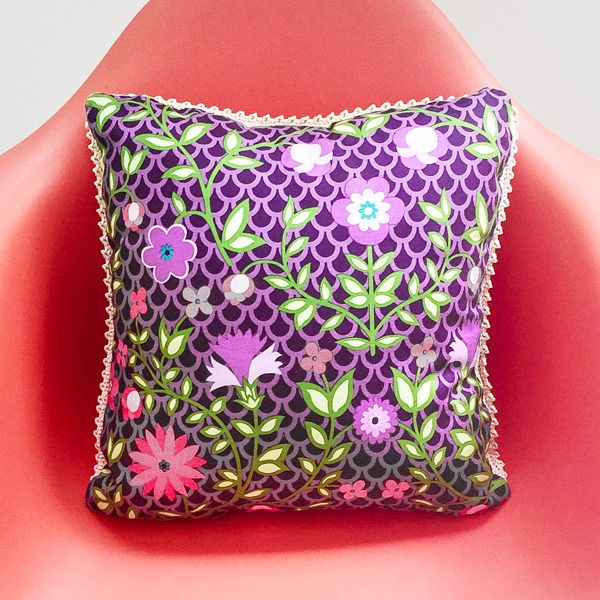
Quite decent for a first effort but lots more practice is needed in using the machine. For my next cushion cover, I will learn how to attach a zip to the back. This is really fun. 🙂
 We wanted to eat sushi in Kyoto and asked
We wanted to eat sushi in Kyoto and asked 
 There really was no need to be concerned about being too full after a sushi meal at Matsudaya. We did not feel overstuffed at after consuming some 16 courses and 3 carafes of sake over lunch. The Japanese have a knack of feeding you a lot of food in portions that are just right. I even had a
There really was no need to be concerned about being too full after a sushi meal at Matsudaya. We did not feel overstuffed at after consuming some 16 courses and 3 carafes of sake over lunch. The Japanese have a knack of feeding you a lot of food in portions that are just right. I even had a 
 As part of our 10-day Kyushu driving holiday, we spent half a day in Kumamoto city enroute to Mount Aso where we spent 2 nights in a ryokan. We visited the Kumamoto Castle and had a lovely lunch at a sushi place in the city. We then spent the next two days driving around the scenic Mount Aso countryside and mountain plains, and one of our stops was the Nabegataki Falls.
As part of our 10-day Kyushu driving holiday, we spent half a day in Kumamoto city enroute to Mount Aso where we spent 2 nights in a ryokan. We visited the Kumamoto Castle and had a lovely lunch at a sushi place in the city. We then spent the next two days driving around the scenic Mount Aso countryside and mountain plains, and one of our stops was the Nabegataki Falls.


 The Nabegataki Falls is a small waterfall nestled in the Mount Aso countryside. The place is so pretty – it looks like a watercolor painting, or like a frame out of a Japanese anime.
The Nabegataki Falls is a small waterfall nestled in the Mount Aso countryside. The place is so pretty – it looks like a watercolor painting, or like a frame out of a Japanese anime. We stayed at
We stayed at  This is Mume’s chinoiserie-style lounge-cum-bar, furnished in dark wood accents, European and Chinese furniture, Chinese lanterns. There is always a huge floral arrangement sitting on the counter. This is where guests gather to have their breakfast, pre-dinner drinks, coffee/snack when you are back from a day out traipsing around Kyoto.
This is Mume’s chinoiserie-style lounge-cum-bar, furnished in dark wood accents, European and Chinese furniture, Chinese lanterns. There is always a huge floral arrangement sitting on the counter. This is where guests gather to have their breakfast, pre-dinner drinks, coffee/snack when you are back from a day out traipsing around Kyoto. I love Mume’s breakfast (which is included in the room price). They serve a daily continental breakfast set comprising fruit juice, homemade yoghurt, fruit, homemade soup, breakfast rolls, soft-boil egg, assortment of jams and coffee from the Nespresso machine. The food is simple, clean, fresh and delicious. I usually skip the breakfast rolls and soft-boil egg because too much food in the morning ruins my appetite for lunch.
I love Mume’s breakfast (which is included in the room price). They serve a daily continental breakfast set comprising fruit juice, homemade yoghurt, fruit, homemade soup, breakfast rolls, soft-boil egg, assortment of jams and coffee from the Nespresso machine. The food is simple, clean, fresh and delicious. I usually skip the breakfast rolls and soft-boil egg because too much food in the morning ruins my appetite for lunch.

 Another reason that we like Mume is its location. It is conveniently situated a couple of streets behind Gion, and within walking distance to the Kamo River, the Gion-Shijo subway line, the shopping districts in Shijo-dori and San-jo-dori, as well as the Kiyomizu Temple, Yasaka Shrine and Maruyama Park.
Another reason that we like Mume is its location. It is conveniently situated a couple of streets behind Gion, and within walking distance to the Kamo River, the Gion-Shijo subway line, the shopping districts in Shijo-dori and San-jo-dori, as well as the Kiyomizu Temple, Yasaka Shrine and Maruyama Park.
 Another stretch of machiyas that is very popular with bridal shoots. It is a lovely spot for a morning walk, before the crowds turn up.
Another stretch of machiyas that is very popular with bridal shoots. It is a lovely spot for a morning walk, before the crowds turn up.

 Kyoto is just so charming.
Kyoto is just so charming.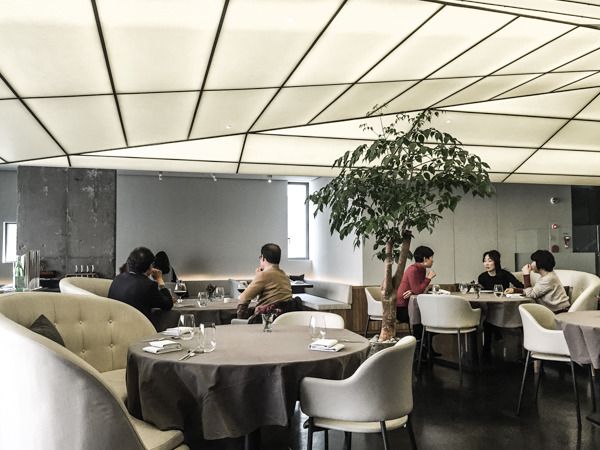




 Originally from Osaka, I have never heard of Pablo until a friend mentioned its popularity to me. When I spotted a Pablo shop in Dotonbori, I joined the queue to get some tarts.
Originally from Osaka, I have never heard of Pablo until a friend mentioned its popularity to me. When I spotted a Pablo shop in Dotonbori, I joined the queue to get some tarts. I am not a fan of matcha-anything but I love Tsujiri’s matcha parfaits. Their matcha ice cream is smooth and creamy, with a touch of bitterness. I have always been satisfying my Tsujiri matcha parfait craving at the
I am not a fan of matcha-anything but I love Tsujiri’s matcha parfaits. Their matcha ice cream is smooth and creamy, with a touch of bitterness. I have always been satisfying my Tsujiri matcha parfait craving at the  I fell in love with this cute Angie Bunny amigurumi designed by
I fell in love with this cute Angie Bunny amigurumi designed by  In addition to the bunny, I also wanted to make the set of pajamas for the bunny but the pattern proved too tedious for me. I made one leg of the pants and decided to ditch this set of pajamas for a one-piece dress, using another pattern from CrochetObjet. The pajamas pattern is not difficult to follow, just time-consuming, and on this occasion, I needed the gratification of completing the bunny to come sooner.
In addition to the bunny, I also wanted to make the set of pajamas for the bunny but the pattern proved too tedious for me. I made one leg of the pants and decided to ditch this set of pajamas for a one-piece dress, using another pattern from CrochetObjet. The pajamas pattern is not difficult to follow, just time-consuming, and on this occasion, I needed the gratification of completing the bunny to come sooner. Ta-dah. Pink dress. Pink ballet shoes. Purple crochet flower with a fabric button that I had made myself. 🙂
Ta-dah. Pink dress. Pink ballet shoes. Purple crochet flower with a fabric button that I had made myself. 🙂 We were walking along one of many covered shopping arcades in Dotonburi when we came across this duck udon shop. It is the quintessential local Japanese eatery – you buy a meal ticket at the machine outside the shop, hand over the ticket to the staff in the shop, find a place at the counter and wait for your food to be served.
We were walking along one of many covered shopping arcades in Dotonburi when we came across this duck udon shop. It is the quintessential local Japanese eatery – you buy a meal ticket at the machine outside the shop, hand over the ticket to the staff in the shop, find a place at the counter and wait for your food to be served.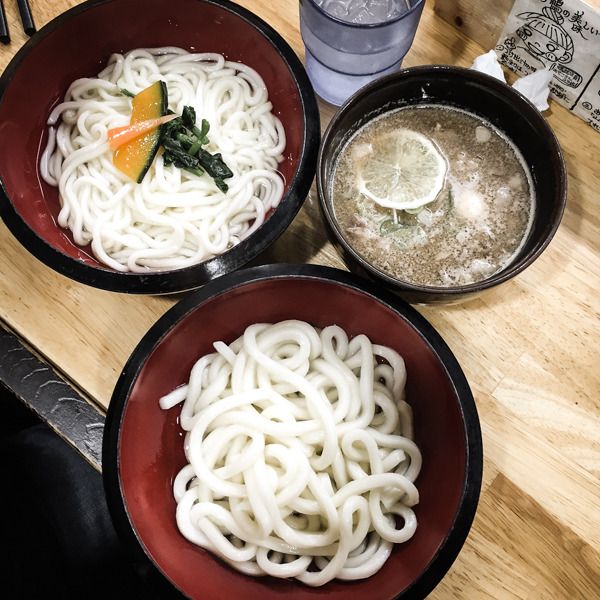 Oh gawd, the duck udon was delicious! The broth was so good, that the husband ordered another set (udon + duck broth) while I ordered just another serving of udon as I still had plenty of duck broth left from the first set. This is simple comfort food at its best. I cannot remember the English name of this shop but I think it is called
Oh gawd, the duck udon was delicious! The broth was so good, that the husband ordered another set (udon + duck broth) while I ordered just another serving of udon as I still had plenty of duck broth left from the first set. This is simple comfort food at its best. I cannot remember the English name of this shop but I think it is called 
 We were introduced to Ristorante 245 Gion by our Kyoto hotel, Hotel Mume. The restaurant is conveniently located on the same street as Hotel Mume on Shinmonzen Dori (several streets behind Gion) which meant that we could get ourselves totally tipsy and still be able to make our way back very easily on foot.
We were introduced to Ristorante 245 Gion by our Kyoto hotel, Hotel Mume. The restaurant is conveniently located on the same street as Hotel Mume on Shinmonzen Dori (several streets behind Gion) which meant that we could get ourselves totally tipsy and still be able to make our way back very easily on foot.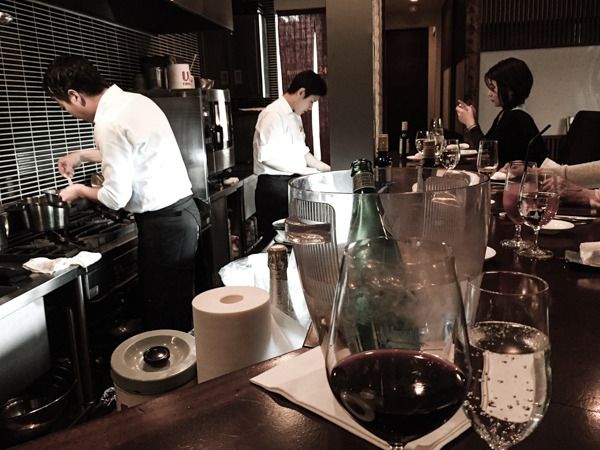 There were five of us in the restaurant on a Sunday night. The chef helmed the kitchen with only one assistant who was responsible for topping up drinks, serving wine, plating the food, serving the food, removing plates AND washing the dishes! You will never find someone who is willing to do all of that in Singapore.
There were five of us in the restaurant on a Sunday night. The chef helmed the kitchen with only one assistant who was responsible for topping up drinks, serving wine, plating the food, serving the food, removing plates AND washing the dishes! You will never find someone who is willing to do all of that in Singapore.




 I do not eat much bread in my diet but whenever I am in Japan, I find myself eating bread almost every day. We usually go to a kissaten close to our hotel (you can usually find one along the streets or in a train station) for our Japanese-toast-slathered-with-butter fix in the morning.
I do not eat much bread in my diet but whenever I am in Japan, I find myself eating bread almost every day. We usually go to a kissaten close to our hotel (you can usually find one along the streets or in a train station) for our Japanese-toast-slathered-with-butter fix in the morning.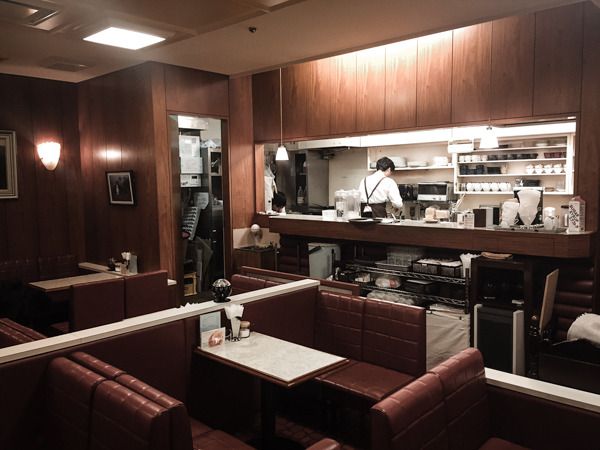
 The Shin-Yurakucho building is quite easy to find. It is just across the street from BIC Camera which you cannot miss coming out of the Yurakucho train station. Take the escalator down to the basement of the building and you will see Hamanoya Parlor on your right.
The Shin-Yurakucho building is quite easy to find. It is just across the street from BIC Camera which you cannot miss coming out of the Yurakucho train station. Take the escalator down to the basement of the building and you will see Hamanoya Parlor on your right. Walking into Hamanoya Parlour takes you back to the 1980s, with its red vinyl seats and brown paneled walls. They do not have an English menu which meant that I had to slowly make out the Katakana characters on the Japanese menu. Luckily, an English-speaking Japanese lady seated at the next table heard me asking for an English menu and offered to help us with our orders. She explained to us what was on the menu and also offered her recommendations (she is a regular at Hamanoya) as to what we should try.
Walking into Hamanoya Parlour takes you back to the 1980s, with its red vinyl seats and brown paneled walls. They do not have an English menu which meant that I had to slowly make out the Katakana characters on the Japanese menu. Luckily, an English-speaking Japanese lady seated at the next table heard me asking for an English menu and offered to help us with our orders. She explained to us what was on the menu and also offered her recommendations (she is a regular at Hamanoya) as to what we should try. After devouring most of the fruit sandwiches in super-quick time, I was quite full but I had to order the egg omelette sandwiches. Well, they were the reason why we went to Hamanoya. The egg sandwiches were excellent. Thick, fluffy and still warm, having come straight out of the kitchen. I would have enjoyed the egg sandwiches even more had I eaten them on an empty stomach. As you can see from the photo, the egg sandwiches are thick and very filling.
After devouring most of the fruit sandwiches in super-quick time, I was quite full but I had to order the egg omelette sandwiches. Well, they were the reason why we went to Hamanoya. The egg sandwiches were excellent. Thick, fluffy and still warm, having come straight out of the kitchen. I would have enjoyed the egg sandwiches even more had I eaten them on an empty stomach. As you can see from the photo, the egg sandwiches are thick and very filling. The husband loves oden. So do I.
The husband loves oden. So do I. At Otafuku, you get to pick what you want to eat from the menu (and they have an English menu). Each table gets a large oden pot set over a fire, so your oden is always nice and warm throughout your meal. We ordered piles of oden and then spotted a blackboard with more food items written in Japanese. Good thing that I could make out gyu suji nikomi (stewed beef tendon) on the board ‘cos that is one of our favorite things to eat.
At Otafuku, you get to pick what you want to eat from the menu (and they have an English menu). Each table gets a large oden pot set over a fire, so your oden is always nice and warm throughout your meal. We ordered piles of oden and then spotted a blackboard with more food items written in Japanese. Good thing that I could make out gyu suji nikomi (stewed beef tendon) on the board ‘cos that is one of our favorite things to eat. The oden was fabulous. We loved all the beancurd things that we picked and above all, the very tasty broth flavored with lots of mustard. The stewed beef tendon was very good too. So good that we polished off two plates. The meat was soft, flavorful, melt-in-your-mouth tender.
The oden was fabulous. We loved all the beancurd things that we picked and above all, the very tasty broth flavored with lots of mustard. The stewed beef tendon was very good too. So good that we polished off two plates. The meat was soft, flavorful, melt-in-your-mouth tender. From Otafuku, it was a 20 minute stroll back to the Asakusa subway station. We were glad to be able to walk-off the huge dinner that we had just consumed.
From Otafuku, it was a 20 minute stroll back to the Asakusa subway station. We were glad to be able to walk-off the huge dinner that we had just consumed. Since we had to walk pass Sensoji on our way back to the subway station, we decided to visit the temple. We have never gone there at night, only during the day, and were amazed at how beautiful the temple looked at night. The crowds had thinned, and many of the shops along the Nakamise-dori were preparing to wind down for the day. It is a much nicer place to visit at night than during the day when the place is packed to the brim with tourists.
Since we had to walk pass Sensoji on our way back to the subway station, we decided to visit the temple. We have never gone there at night, only during the day, and were amazed at how beautiful the temple looked at night. The crowds had thinned, and many of the shops along the Nakamise-dori were preparing to wind down for the day. It is a much nicer place to visit at night than during the day when the place is packed to the brim with tourists.